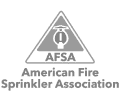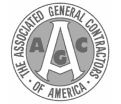What You Need to Know About Insulation & Fire Protection
When it comes to keeping your home warm in the winter and cool in the summer, insulation is a must. By slowing heat transfer, insulation is a cost-effective way to lower your heating and cooling bills.
However, the importance of fire safety is something homeowners tend to forget about when choosing insulation. As you can imagine, fluffy, combustible insulation could help a small fire spread quickly to the rest of your home. Fortunately, plenty of fire-rated insulation products are available today to help you make your home more efficient without compromising fire safety.
Fiberglass Insulation
- What is it? This insulation is comprised of extremely fine glass fibers spun into batts or rolls or used as loose-fill insulation. Fiberglass is one of the most common insulation materials used today because it’s affordable, easily available, and versatile.
- How does it stand up against fire? Since it’s made of glass, fiberglass is naturally noncombustible, meaning no additional fire-retardant chemical treatment is required. In fact, unfaced fiberglass is an acceptable fire block when installed in wood frames. Keep in mind that some fiberglass facings such as foil and kraft paper are combustible, but as long as faced insulation is installed with a code-approved barrier, it poses no additional fire hazard.
Mineral Wool Insulation
- What is it? Also known as rock wool or slag wool, mineral wool is a made-made material comprised of some natural minerals, including basalt and diabase. It’s also eco-friendly because mineral wool contains about 75 percent post-industrial recycled content. It’s available in batts, rolls, or as loose-fill insulation.
- How does it stand up against fire? Mineral wool is one of the best insulating materials you can use when fire safety is a concern. It’s comprised entirely of noncombustible fibers so no additional fire-retardant chemicals are required. Mineral wool can withstand temperatures in excess of 1,800 degrees F and unlike fiberglass, it doesn’t melt in high heat. Foil and kraft paper-faced mineral wool must be installed with a code-approved barrier.
Cellulose Insulation
- What is it? Cellulose is made of paper products, especially newspaper. The high recycled material content averages 85 percent, making cellulose a good eco-friendly choice. The paper is shredded into tiny pieces and used as loose-fill insulation, especially in oddly-shaped building cavities where batts and rolls aren’t an option.
- How does it stand up against fire? Paper is highly combustible. To overcome this, cellulose insulation is treated with nontoxic borate, sometimes combined with less expensive ammonium sulfate, for both fire and insect resistance. Proper installation is vital for fire safety, at which point cellulose can withstand temperatures up to 1,200 degrees F.
Spray Foam Insulation
- What is it? Sprayed or foamed-in-place insulation is usually made of polyurethane, polyisocyanurate, or another foaming product. It’s appropriate for all sorts of insulating applications, from open wall cavities to enclosed existing walls to unfinished attic floors. The product is applied with a small, hand-held spray container.
- How does it stand up against fire? By itself, some types of spray foam perform poorly against fire, igniting at just 700 degrees F. This is why an approved thermal barrier, such as half-inch gypsum board, must cover all foam materials following installation. Low-density polyurethane spray foam is more fire resistant and won’t sustain a flame.
Keep Your Property Safe from Fire
Whether you’re hoping to install insulation or fire protection systems in your home or business, let Kauffman Co. help you get the job done right. We specialize in fire and life safety systems to help keep properties and people safe.
To learn more, or to schedule services, please contact Kauffman Co. online or call us today.
















